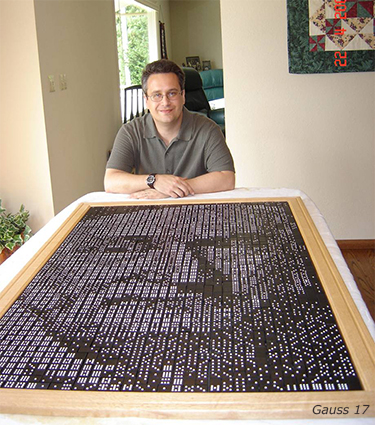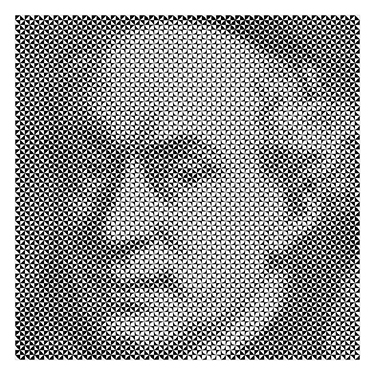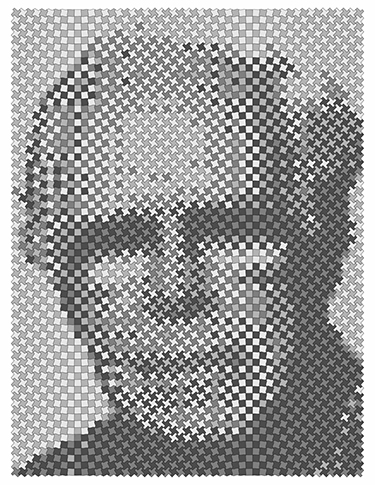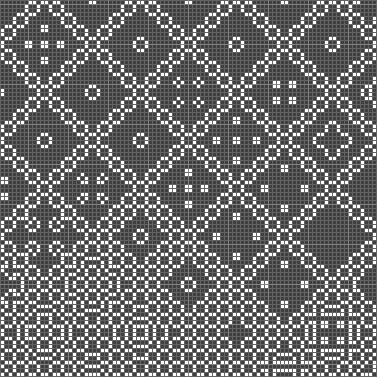Mosaics
Domino Mosaics
Gauss17 is a mosaic composed of 17 complete sets of double-nine dominoes. The subject is Carl Friedrich Gauss, the "Prince of Mathematicians." In 1796, at the age of 19, Gauss proved that it is possible to construct a regular 17-sided polygon using a ruler and compass.
In this mosaic, the 935 dominoes form 34 columns and 55 rows of squares. Because 34 and 55 are consecutive Fibonacci numbers, the mosaic has an aspect ratio close to the golden ratio.
Visit downloads to obtain domino plans.

Truchet-Tile Mosaics
Truchet from Truchet Tiles is a portrait of Father Sébastien Truchet (1657-1729). In 1704 Truchet published an article that described his investigations into how a simple set of square tiles, each divided by a diagonal into a white half and a black half, can be arranged to form pleasing patterns. Here I allowed the diagonals to bend at their midpoints, making some tiles darker and other tiles brighter, in accordance with the underlying pixels of the target image.

Map-Colored Mosaics
Martin Gardner Four-Colored is a map-colored mosaic of Martin Gardner, the late great popularizer of mathematics. Martin Gardner introduced me to many things including the Four Color Theorem and the work of M.C. Escher. As a tribute, I created this Escher-like deformation of a square grid and then used used integer programming to four-color it so that it would resemble Martin Gardner's image as closely as possible.

Game of Life Mosaics
Here is a small section of a still life, a stable pattern in John Horton Conway's Game of Life. Each living cell (each bright pixel) has either two or three living neighbors, and none of the dead cells (the dark pixels) have precisely three living neighbors. When viewed from a distance, the entire still life pattern resembles Magritte's still life painting "Ceci n'est pas une pomme."
